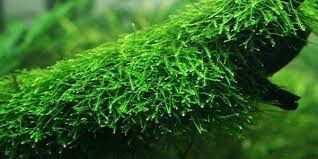Vesicularia dubyana 'Java Moss' (10x10cm Mat)
Vesicularia dubyana, commonly known as Java Moss, is one of the most popular and beginner-friendly mosses in the aquarium hobby. It’s ideal for both aquariums and ripariums, thanks to its hardiness, low care needs, and versatility.
Java Moss (Vesicularia dubyana) – Care Guide
Quick Facts
-
Common name: Java Moss
-
Scientific name: Vesicularia dubyana
-
Type: Aquatic moss (true aquatic)
-
Growth habit: Creeping, mat-forming
-
Placement: Foreground, midground, hardscape, or floating
-
Origin: Southeast Asia
-
Growth rate: Slow to moderate
-
Tank position: Submerged or at waterline (emersed growth possible)
In Aquariums
✅ Why It’s Great:
-
Can grow fully submerged
-
Attaches to rocks, wood, or mesh
-
Provides shelter for fry and shrimp
-
Improves water quality by absorbing excess nutrients
-
Thrives in low-tech, low-light tanks
Water Conditions
| Parameter | Ideal Range |
|---|---|
| Temperature: | 20–28°C (68–82°F) |
| pH: | 5.5–8.0 |
| Hardness: | Soft to moderately hard |
| CO₂: | Not required, but improves growth |
| Flow: | Low to moderate (helps prevent debris buildup) |
Lighting
-
Low to medium light is sufficient
-
Will grow faster and denser with medium+ light
-
Avoid intense direct light, which can trigger algae
Planting/Attachment
-
Attach with:
-
Cotton thread or fishing line
-
Superglue gel (cyanoacrylate)
-
Moss mesh or pads
-
-
Grows well on:
-
Driftwood
-
Lava rock
-
Coconut husk
-
Substrate (but tends to lift over time)
-
✂️ Maintenance
-
Trim with aquascaping scissors to shape or prevent overgrowth
-
Remove trapped detritus regularly (shrimp help!)
-
Prevent clogging filters or shading other plants
In Ripariums
✅ Use at the Waterline
-
Java Moss can grow emersed with high humidity
-
Great for covering moist surfaces like:
-
Wood near waterline
-
Vertical rock faces
-
Background mesh panels
-
️ Riparium Tips
-
Keep the moss constantly moist
-
Mist frequently or maintain high humidity (70–90%)
-
Use in splash zones or waterfall edges
-
Slower growth emersed, but survives well
Fertilization
-
Aquarium: Absorbs nutrients from water column
-
Use a balanced liquid fertilizer for best growth
-
-
Riparium: Foliar misting with diluted ferts (optional)
⚠️ Common Issues
| Problem | Cause | Solution |
|---|---|---|
| Algae in moss | Too much light or poor flow | Reduce lighting, increase circulation, add algae-eaters |
| Moss turning brown | Poor water quality or light | Improve filtration, light, or trim dead sections |
| Floating loose moss | Not secured well | Re-tie or glue to hardscape |
Compatibility
-
Safe for all fish, shrimp, and snails
-
Excellent for:
-
Breeding tanks
-
Shrimp tanks
-
Betta tanks
-
Natural aquascapes
-
✅ Summary
| Feature | Aquarium | Riparium |
|---|---|---|
| Fully submerged | ✅ Yes | ❌ No (emersed only at high humidity) |
| Roots in water | ✅ N/A (no true roots) | ✅ Yes |
| Light needs | Low–Medium | Medium |
| CO₂ | Optional | Not needed |
| Ideal use | Carpeting hardscape, shelter for fry | Clinging to wet wood/rocks at waterline |

